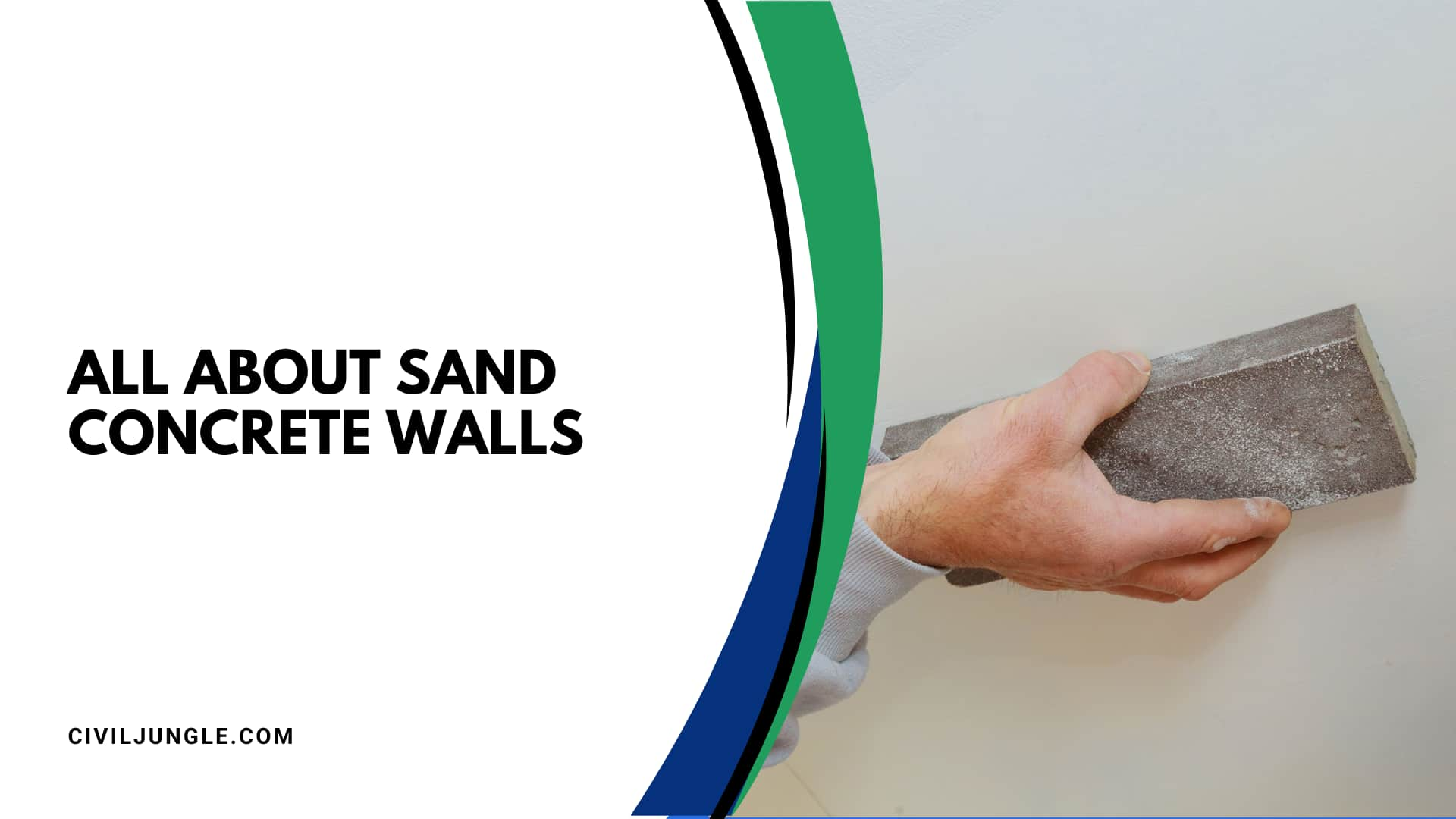
How To Sand Concrete Walls?

One should start with a solid surface grinder to smooth the surface, then use a belt or rotating sander with the rough grit sandpaper. They should wet the wall to reduce dust and reduce heat. You can use that finer grit sandpaper for a smoother finish as you go along.
The ultimate objective of sanding concrete is to achieve a perfect finish and smooth the surface. It is necessary to follow the right procedure to achieve this objective foam.
If concrete walls have been in certain areas you want to smooth, you can easily sand concrete walls with a concrete grinder, surface grinder, fairly rough diamond grit sanding pads, and a belt and rotating sander.
Concrete is a very hard and dense material we usually pour into forms to build walls. You can get a perfectly smooth surface of the leaving without any scratches.
Concrete wall sanding is a multi-step process. Once the surface of the concrete walls is free of bumps and fairly flat, you can begin sanding. And you can easily sand a concrete fence with enough time and effort.
The concrete walls are a blank canvas. They use a small angle grinder and diamond grit masonry blade to cut off and grind off the pieces of the concrete that should come off the surface. And be sure to wear a mask and goggles because the grinding concrete produces dust and chunks of concrete.
The sanding of concrete walls requires the following issues:
- Sponge
- Water hose
- Fine sandpaper
- A concrete polisher
- Concrete sealer
- Diamond grinding pad
- The hand or orbital sander
Concrete has a rich history and is popular for those medium buildings and even for homes. Polishing smoothes that concrete to a pleasant, like sanded wood finish.
Where as with wood planks, you use sandpaper, with concrete polishing, you use those special diamond-segmented abrasives. And like wood, you can gradually use that fine abrasive to build a smooth, shiny, mirror-like finish.
Some Relate “Wall” Article Are as follows.
- Frost Wall
- Pony Wall
- Cmu Wall
- Parapet Wall
- What Is Drywall
- Wall Paint Finishes
- Gabion Wall Cost
- What Is a Shear Wall
- Types of Partition Wall
- Alternatives to Drywall
- How to Find Wall load
- Mount TV on Brick Wall
- Disadvantages of Wall Putty
- Weep Holes in Retaining Wall
- Pros and Cons of Sealing Brick
- Bathroom Half Wall Panels
- Long Wall Short Wall Method
- Cost to Repair Drywall Ceiling Water Damage
- How to Cover Concrete Walls in Basement
Can You Sand Concrete Walls?
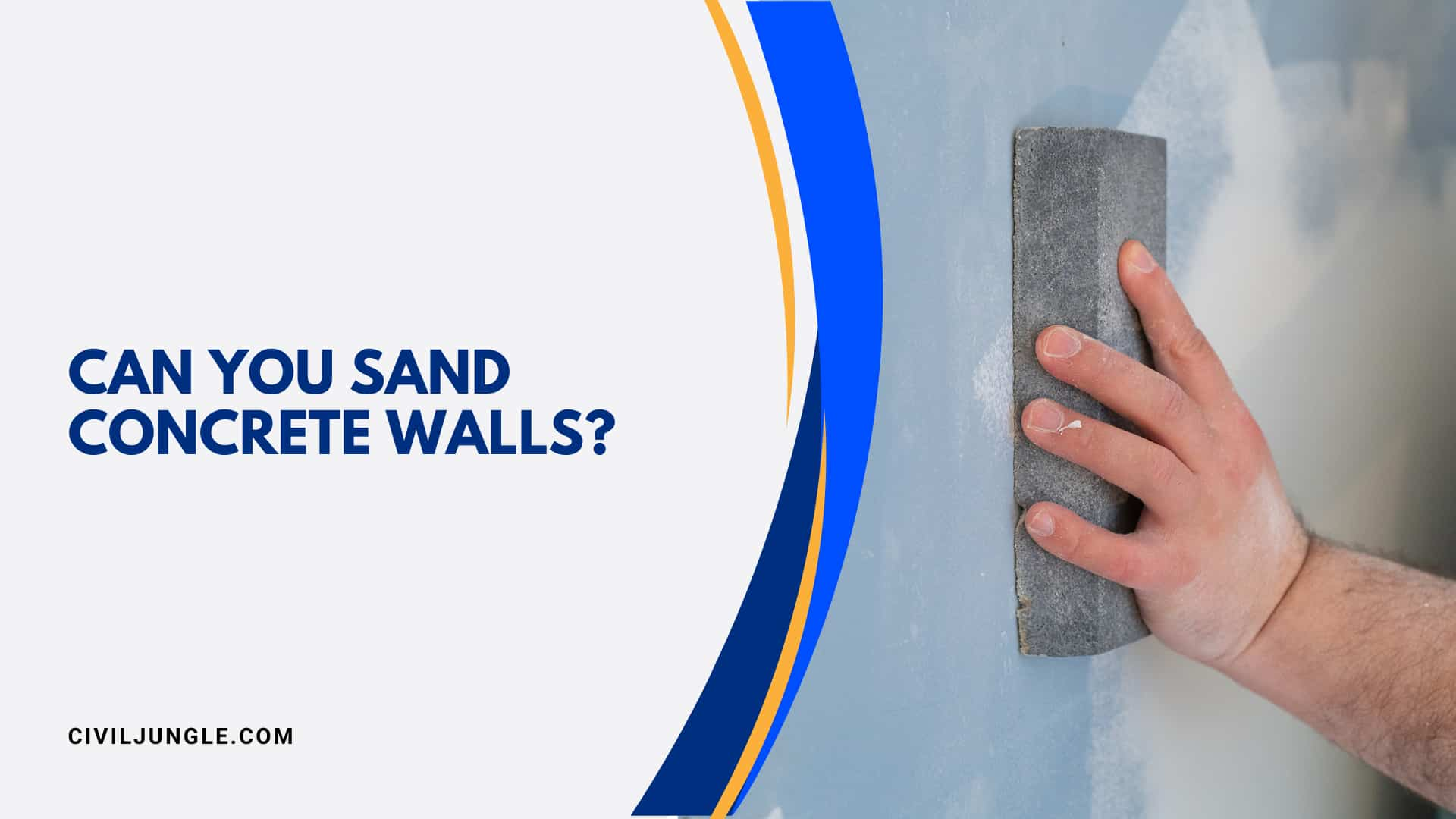
Yes, if you know how and have the necessary equipment, you can sand concrete with sandpaper. However, it is a complex task. Concrete is a very hard and dense material so you will need some material to sand. For example, made by concrete mixes sand, stone, and cement with water.
Each material amount is called the concrete mix in the ratio. By changing the amounts of each ingredient in the mix, you also change the properties of the concrete.
The correct process, and you will have that smooth, flat wall in no time. The salt and pepper finish adds to create a speckled look. The salt and pepper finish removes approximately 1/16 An inch from the surface of the concrete. And in comparison to the overall finish, the finish is minimal.
Removing as little as 1/4th of an inch of concrete sandpaper is one of the most common tools for that refinishing concrete floors. When sanding concrete, it’s best to use sandpaper with a coarser grit, such as 36 to 60.
Before sanding your concrete walls, please find out how dense they are. If the concrete is soft, then the job becomes easier.
And you use finer and softer grit sandpaper. It does not matter whether sanding concrete has done wet or dry. However, wet sanding does reduce dust. And sanding concrete produces dust.
How Do You Sand A Concrete Wall?
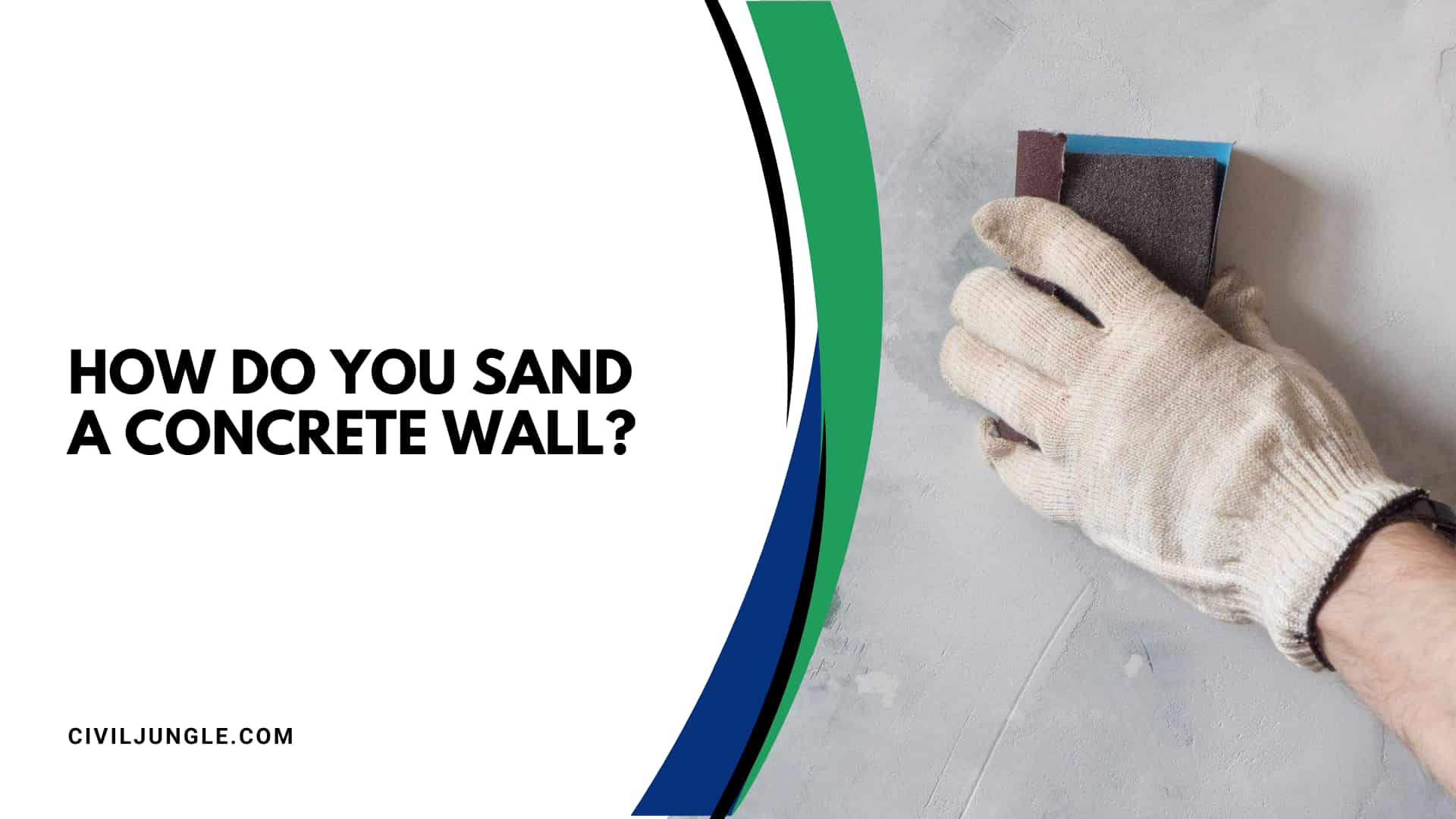
The smoothing of concrete walls is a multi-step operation. First, crush down any large pieces of concrete left over from the forms. A small angle grinder with a diamond grit masonry blade with was used.
Wet the wall to decrease that dust and heat build-up. As you continue, use finer grit sandpaper to get a smoother surface. You may send a very soft, smooth concrete wall with adequate time and effort.
These include an angle grinder, a concrete surface in the grinder, a belt sander, and a disk sander. You begin may sanding the concrete wall once the surface is clear of the projecting in fragments and reasonably level.
And make sure to use special masonry sandpaper, not regular sandpaper designed for the wood. The masonry sandpaper contains diamond dust which is hard enough to sand in the concrete.
Wet Vs. Dry Concrete Sanding
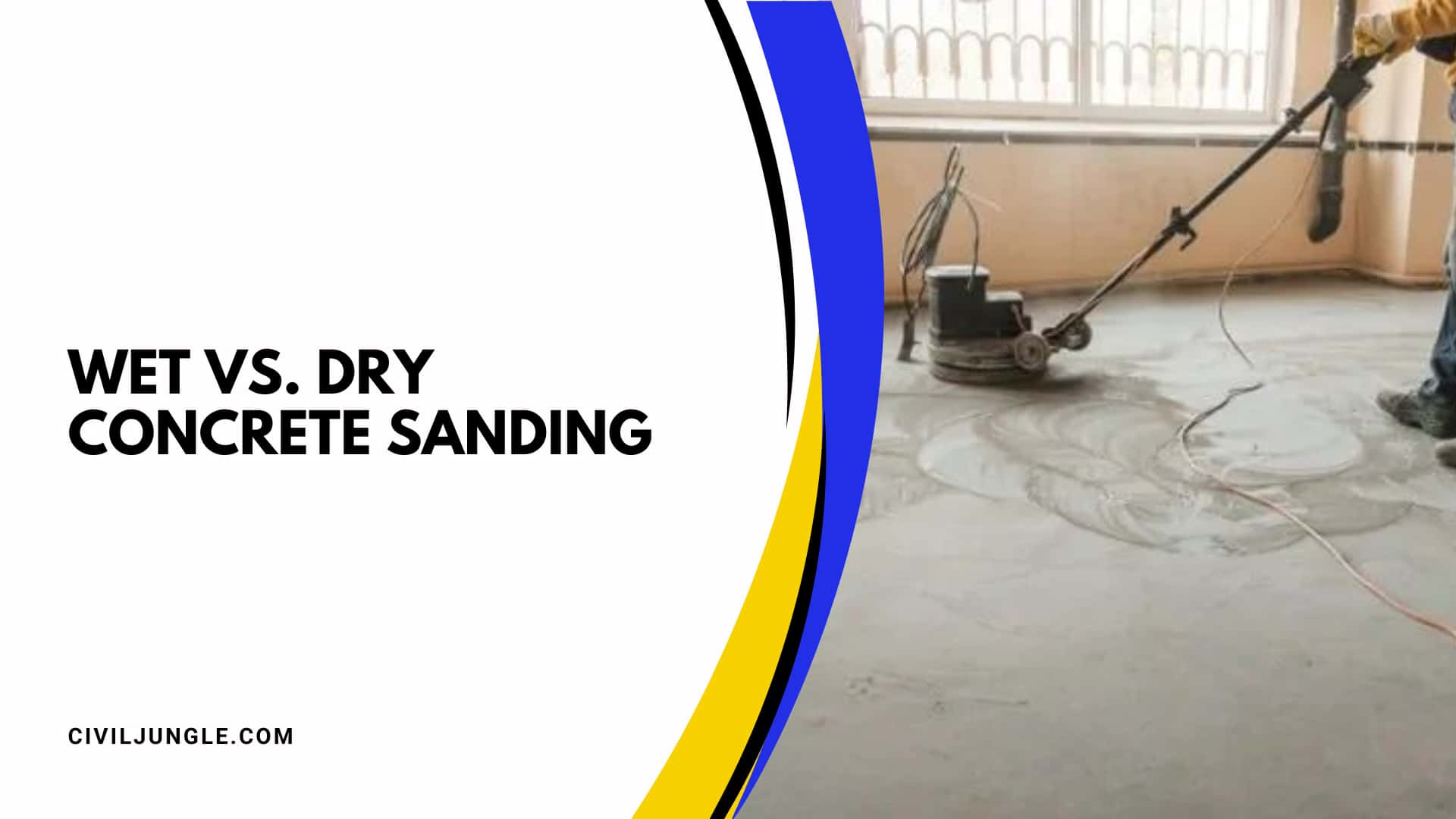
wet sanding, with water as a lubricant, is less abrasive than dry sanding and results in a smoother finish that has been described as the best way to wet-sand the final finish of the project. The dry sanding removes material and smoothes rough that material quickly.
A great option for that wet sanding is if you are sanding off a significant amount of the concrete. And because the grinder stays cool, it sands down concrete much faster and helps extend the sanding life as a pad. But the wet sanding creates a dull finish.
The wet sanding vs. the dry sanding.
| Wet Sanding | Dry Sanding |
| Reduces mess | Significant mess |
| Done by hand |
with a power tool
|
| They use higher-grit sandpaper |
They use lower-grit sandpaper
|
| They use lubricant (usually water) |
No lubricant required
|
| It removes less material |
It removes more material
|
| It takes more time |
It takes less time
|
| It produces a super smooth finish |
It produces a smooth finish
|
The pros and cons of both methods of sanding a concrete wall, but in the end, they both get the job done.
Can You Sand A Concrete Wall With A Belt Sander?
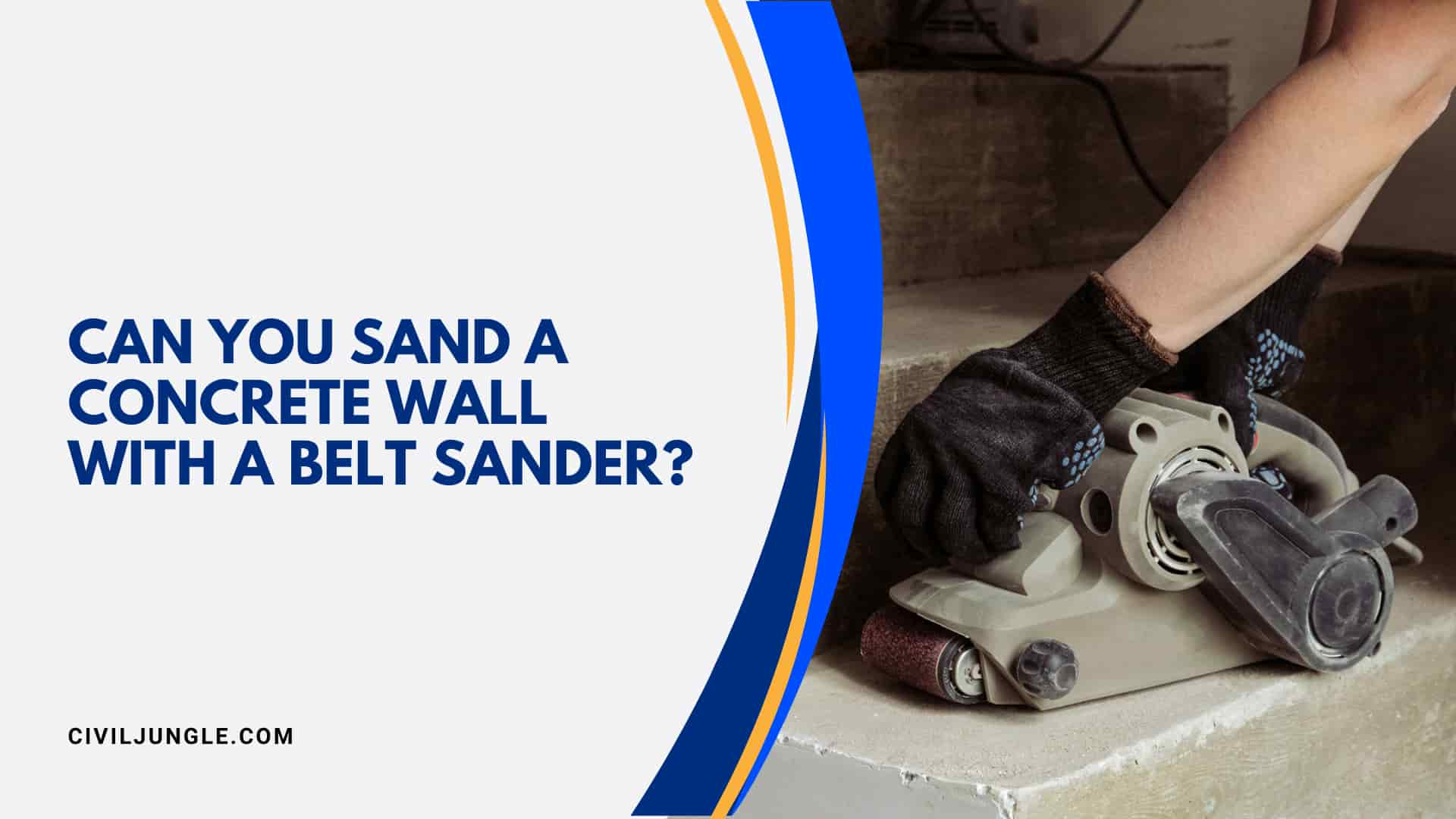
Yes, a concrete wall you sand with a belt sander. A belt sander is a great way to smoothly sand the surface of a concrete wall. But it needs to improve at sanding large uneven areas. Concrete with polishing an orbital sander could be better, and there are more effective in the concrete.
A motor with two drums and a belt sander that high-pitched-spin sandpaper to loop. It collides with the surface and smooths it with the help of sandpaper.
Can You Sand A Concrete Wall With An Orbital Sander?
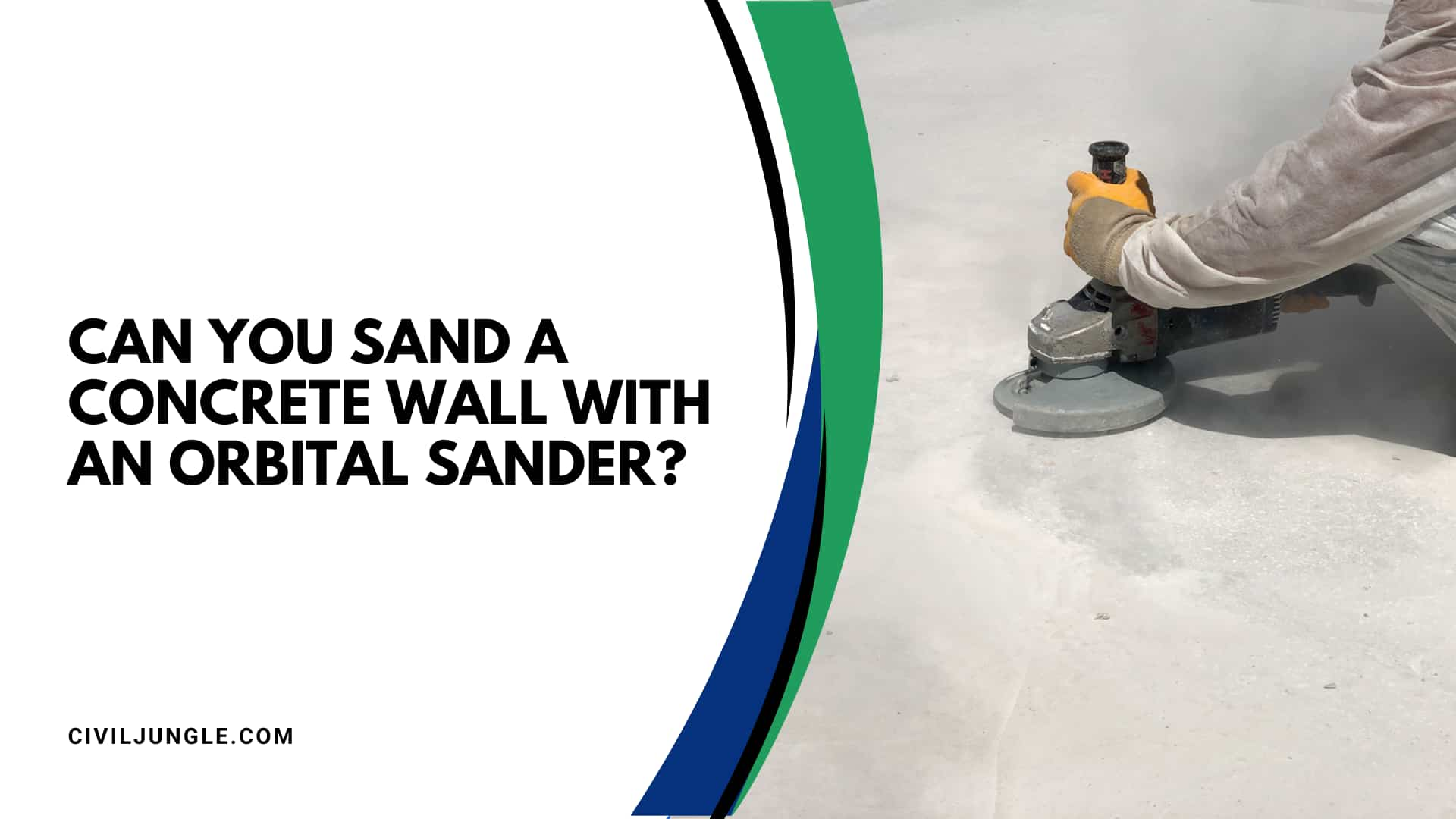
Yes, A concrete wall with an orbital sander. And the three tools working together, along with the hand sanding, provide the best finish.
The most effective random in orbital sander is the time-efficient tool for sanding concrete. It the more convenient than it is using a traditional palm sander, which requires different strokes for left-to-the-right and back-to-front motion in control.
The floor is divided into sections so that you can focus on one section at a time. Sanding concrete floors requires clearing the areas of any obstructions.
The sanding requires bumps and extreme caution at any time. The next step is to repeat steps 6-10 using fine grit paper, and then you are done with the section of the processor and keep going until you get to a grit of 1500 or higher.
An orbital sander is difficult to polish concrete, especially when taking on a large project. A concrete floor is possible and sometimes available is the only option.
Does Regular Sandpaper Work On Concrete?
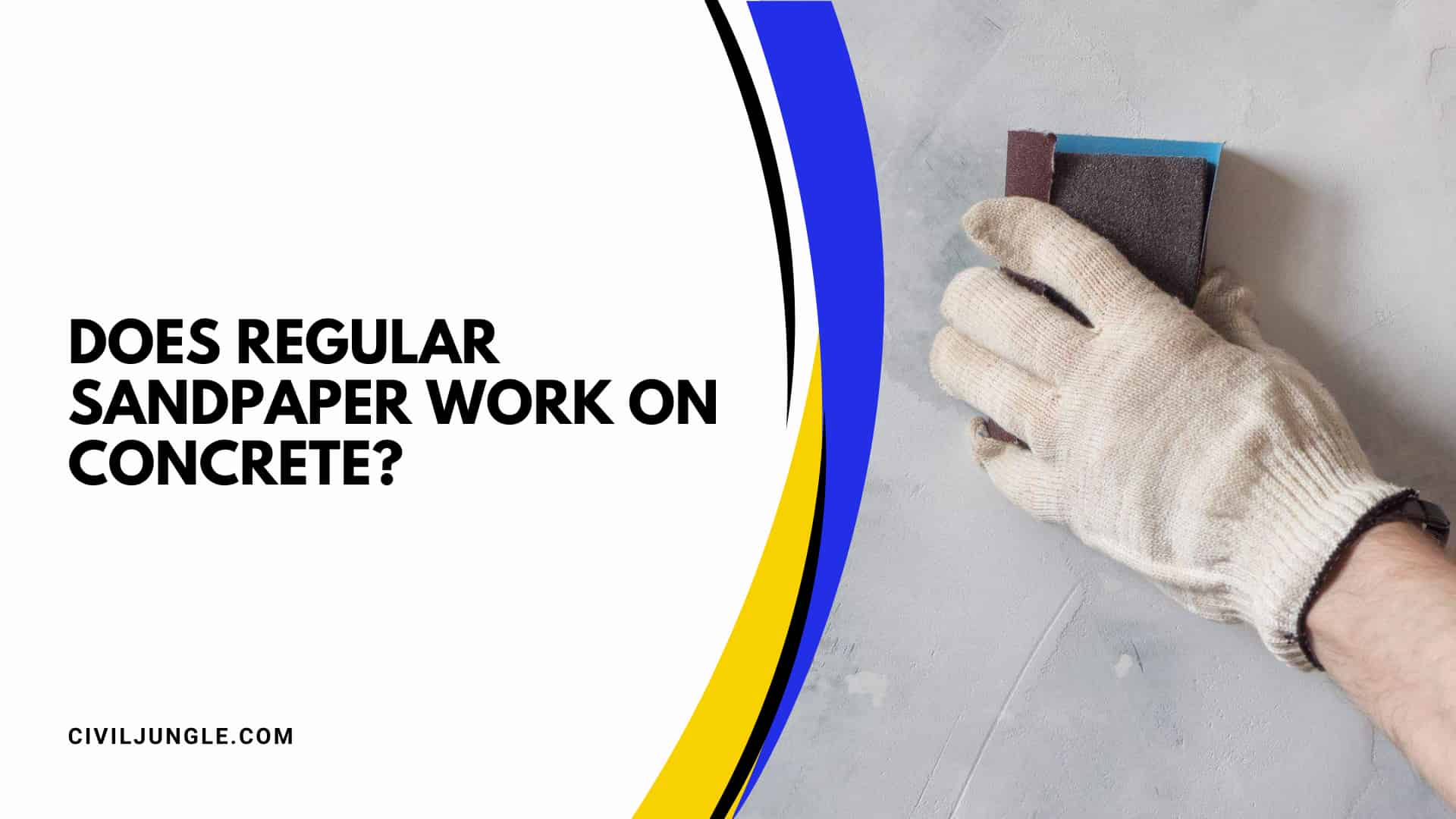
Yes, regular sandpaper work on the concrete. If you prefer, you can sand the concrete by hand instead of using power tools.
Because of regular sandpaper holding, concrete is so hard. While regular sandpapers such as ceramic and aluminum oxide may seem like a good choice for sanding concrete, they fail even when compared to diamond-flake polishing.
It is possible to sand with regular concrete sandpaper. Like wood, a disc designed for sandpaper floors can do your sanding, but if you’re doing it by hand, it saves a lot of time in the long run. It’s worth considering your good time. Concrete sanders come in different grits to remove large amounts.
While there are better choices than regular sandpaper for sanding concrete, as it will be expensive, time-consuming, and tedious, it is important to invest in alternatives.
Regular sandpaper is great for cleaning wood surfaces and removing paint from walls. Higher grits, such as sandpaper, can also work on concrete.
Regular sandpaper is not hard or enough to polish a concrete surface, so you might need a polishing pad or diamond sandpaper. And manual sanding is similar to a power tool, though less tiring and inefficient.
The type of floor you are standing on, and the sandpaper you choose depends. For basic sanding, you should use 40-60 grit sandpaper.
In addition to getting the right sandpaper, ensure you use the right grit.
- After finishing work with the grinder, the first sanding is done with coarse grit. It removes more material but does not leave the surface smooth.
- The medium grit does not sand the material as much as coarse grit sandpaper but gives a finer finish.
- Fine-grit sandpaper gives a smooth finish but won’t sand the concrete.
How Much Concrete Can Sanding Remove?
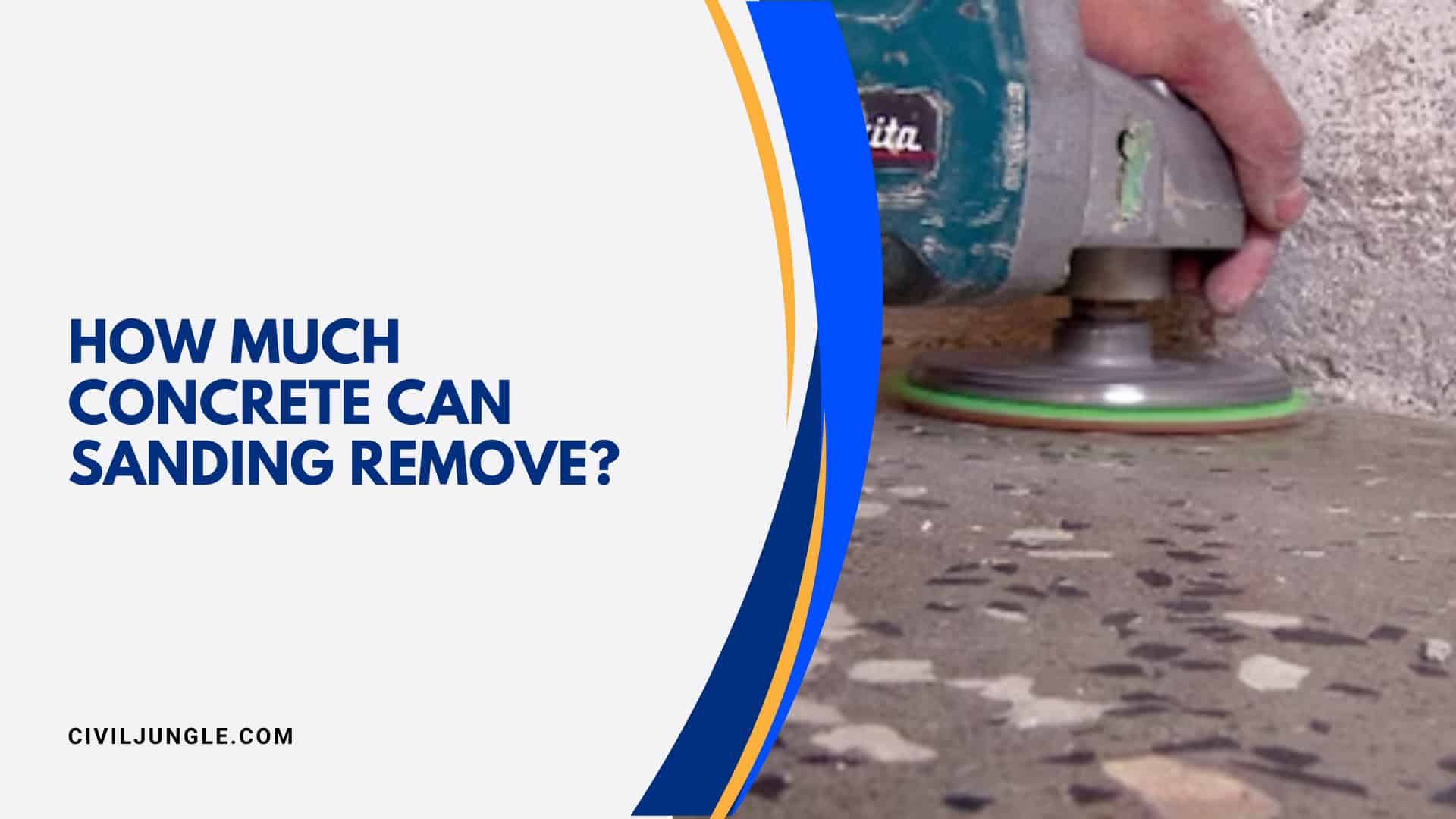
Concrete grinders are full power tools to use carefully to avoid over-sanding the wall or creating uneven areas.
The first pass in the concrete grinder can remove as much as a 1/8th of an inch at that time. A pass with very hard grit sandpaper will remove less than 1/16th of an inch of concrete. The sandpaper is meant to smooth the surface and not grind down large areas of the concrete.
An even better option than you may find that this is removing and replacing the old concrete floor. But it is important to know how much concrete the grinder removes.
On average, the concrete grinders can remove about 1/16 of an inch in a single pass. Concrete is held together in one pass with a grinding wheel, final sanding with medium grit and hard grit sandpaper.
FAQ
Can You Sand Concrete Walls?
Yes, you can sand concrete walls if you have the right tools and follow the proper techniques. Concrete is a hard material, so it requires specific equipment like concrete grinders, surface grinders, and diamond grit sandpaper to achieve a smooth finish.
What Tools Are Needed for Sanding Concrete Walls?
To sand concrete walls effectively, you’ll need a surface grinder, belt sander or rotating sander, diamond grinding pads, fine sandpaper, and a concrete polisher. Additionally, using a sponge, water hose, and concrete sealer may be helpful.
What Is the Difference Between Wet Sanding and Dry Sanding?
Wet sanding uses water as a lubricant to reduce dust and heat, providing a smoother finish. Dry sanding, on the other hand, is quicker but creates more dust. Both methods are effective, but wet sanding is generally preferred for a finer finish and less mess.
Can I Use Regular Sandpaper on Concrete Walls?
While you can use regular sandpaper, it’s not the most efficient choice for concrete. Regular sandpaper may wear out quickly and be less effective than diamond-flake or masonry sandpaper, which is designed to handle the hardness of concrete.
How Much Concrete Can Be Removed by Sanding?
Concrete grinders can remove approximately 1/16 to 1/8 inch of concrete in a single pass, depending on the grit and type of sanding tool used. It’s important to monitor the amount removed to avoid over-sanding and creating uneven surfaces.
Is It Better to Use an Orbital Sander or a Belt Sander for Concrete Walls?
An orbital sander is generally more effective for smoothing concrete surfaces due to its efficiency and ability to cover larger areas. A belt sander is useful for smaller or uneven areas but may not be as effective for large, flat surfaces.
How Do I Achieve a Perfectly Smooth Finish on Concrete Walls?
To achieve a smooth finish, start by removing large bumps with a concrete grinder. Then, use progressively finer grit sandpaper or diamond grinding pads, wetting the wall to minimize dust and heat. Finish with a concrete polisher for a mirror-like surface.
Are There Any Safety Precautions I Should Take When Sanding Concrete Walls?
Yes, always wear safety goggles and a dust mask to protect yourself from dust and debris. Ensure the work area is well-ventilated and take necessary safety precautions when using power tools to avoid accidents.

